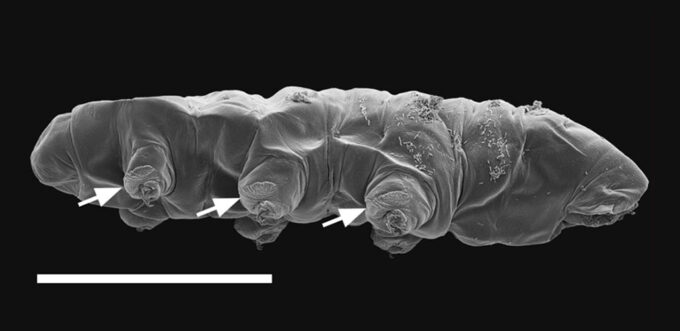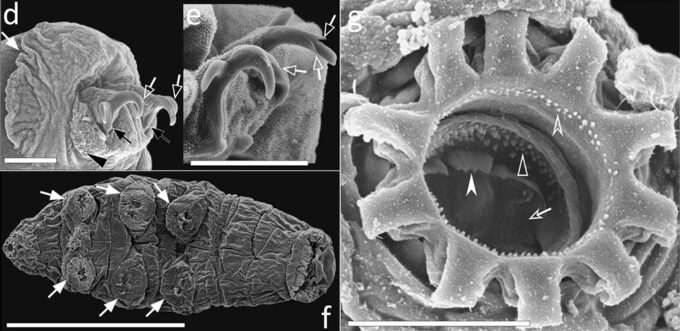Living mysteries: Why teeny-weeny tardigrades are tough as nails
Tardigrades can somehow survive 500 times as much radiation as would kill a human
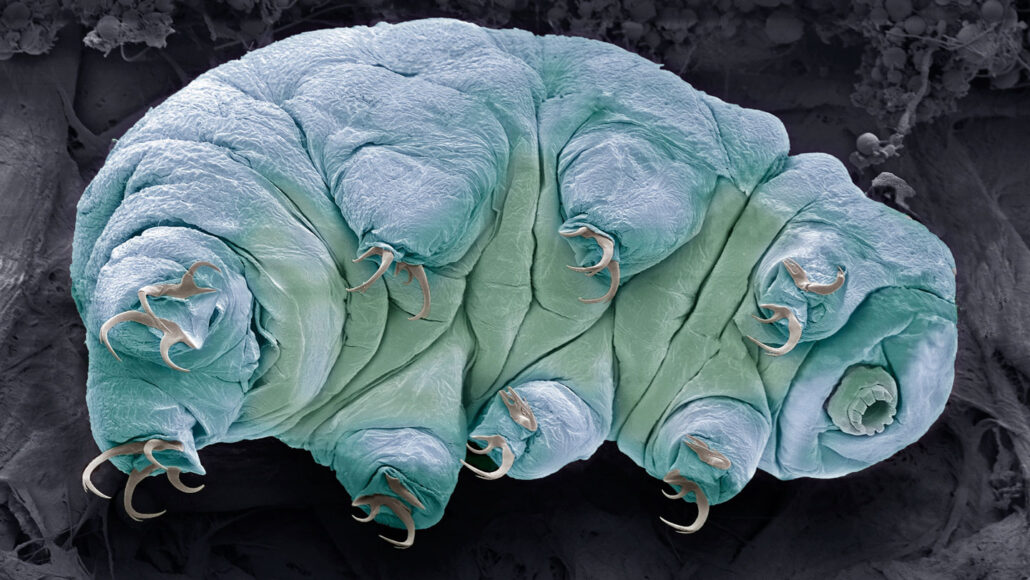
Tardigrades are tiny eight-legged animals that often live in moss, lichens and soil. This one is magnified 1,000 times through an electron microscope. Amazingly, tardigrades can survive 500 times the amount of radiation that would kill a human. Scientists are starting to understand how.
STEVE GSCHMEISSNER/SCIENCE PHOTO LIBRARY/GETTY IMAGES
By Douglas Fox
One of the weirdest mysteries of modern science began nearly 60 years ago. It started near a small village on the south coast of France. Scientists discovered that itty-bitty animals there could survive the extreme radiation of outer space.
The village of Peillon (PAY-oh) is lovely. Perched atop a hill and surrounded by olive trees, a cluster of white brick buildings there resembles a medieval castle. The trunks of those trees are coated in fluffy green moss. And hidden in that moss are tiny eight-legged critters called tardigrades (TAR-deh-grayds). Each is about the size of a grain of salt.
These creatures are the heroes of our story. In 1963, Raoul-Michel May gathered hundreds of tardigrades from the mossy trees in Peillon. He was a biologist in France. He put the little animals in a dish and zapped them with X-rays.
X-rays are relatively harmless in tiny doses. They shoot right through your body’s soft tissues (but not bone — that’s why doctors can use them to take images of bones). At very high doses, however, X-rays can kill humans. And it’s a horrible death, preceded by skin burns, vomiting, diarrhea — and more.

May blasted the tardigrades with up to 500 times the X-ray dose that would kill a human. Amazingly, most of the wee beasts survived — at least for a few days. Since then, scientists have repeated this experiment many times. The critters usually survive.
”We don’t really know why tardigrades are so tolerant to radiation,” says Ingemar Jönsson (YON-sun). It’s “not natural.”
Jönsson works at Kristianstad University in Sweden. A biologist, he has studied tardigrades for 20 years. They can withstand all types of radiation, he’s found: ultraviolet rays, gamma rays — even high-speed beams of iron atoms. He says it’s “not natural” for the animals to survive these conditions. And by that he means that it doesn’t make sense. It doesn’t square with the way scientists understand evolution.
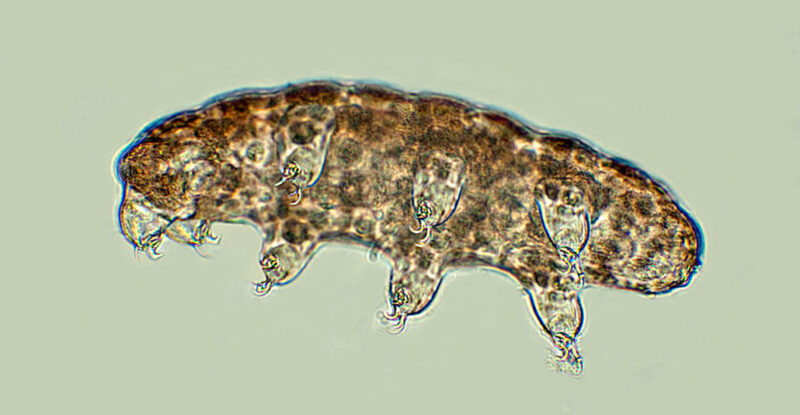
This is a tardigrade swimming in water, seen through a light microscope. Tardigrades can only be active in water. Those that live in moss, lichens or soil have to survive long periods of being dried out.
All living things should be adapted to their environments. Tardigrades that live in the cool shade of an olive grove should be adapted to hot, dry summers and cool, wet winters — but nothing more. Yet these animals can somehow survive levels of radiation millions of times higher than occur anywhere on our planet! So there’s no apparent reason for them to have evolved this trait.
Tardigrades also can survive freezing at –273° Celsius (–459° Fahrenheit). That’s 180 degrees C (330 degrees F) colder than the lowest temperature ever reported on Earth. And they have survived for 10 days in space without any air, orbiting Earth on the outside of a spacecraft. ”Why they have these very high tolerances is a mystery,” says Jönsson. Tardigrades have never experienced these conditions in nature.
Not on Earth, anyway.
He and other scientists now believe they have the answer. If they’re right, it reveals something surprising about our planet: Earth is not nearly as nice a place to live as we thought. And on a more practical level, these little critters could help humans prepare for long voyages in space.
Life in suspended animation
A German preacher named Johann Goeze first discovered tardigrades in 1773. He looked at a tiny pond plant through a microscope and also saw a stout, clumsy creature with pointed claws on each foot. He called it “the little water bear.” They are still called “water bears” today. And their scientific name, tardigrade, means “slow stepper.”
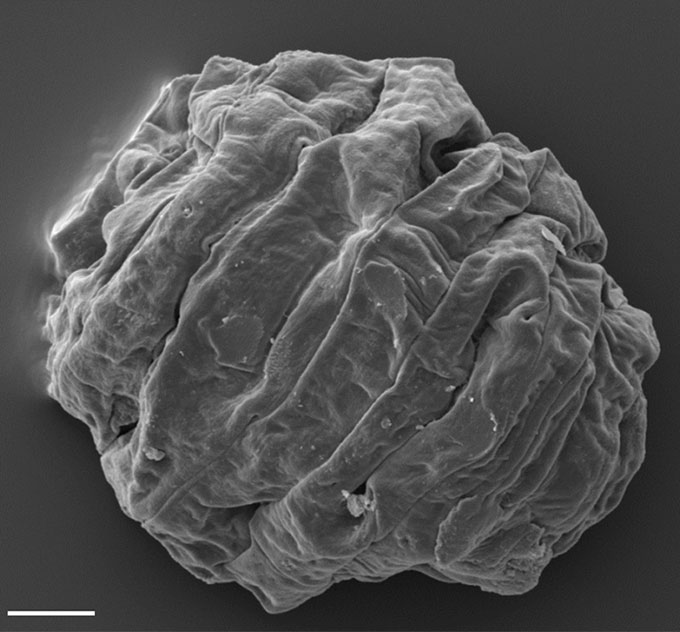
Around 1775, an Italian scientist named Lazzaro Spallanzani placed a tardigrade in a drop of water. He watched through a microscope as the water evaporated. The drop shrank, and the animal stopped moving. It pulled its head and legs completely inside its body — like a silly cartoon turtle. By the time the water was gone, the creature looked like a dry, wrinkled walnut.
The tardigrade had lost 97 percent of the water in its body and shrunk to one-sixth its initial size. (Humans who lose just 30 percent of their water will die.) If the critter was accidentally bumped, it cracked like a dry leaf. It looked dead. And Spallanzani thought it was.
But he was wrong.
The dried tardigrade perked right back up when Spallanzani put it in water. The wrinkled walnut swelled like a sponge. Its head and legs popped back out. Within 30 minutes, it was swimming, paddling its eight legs, as if nothing had happened.
The dried tardigrade had simply stopped its metabolism. No longer breathing, it stopped using oxygen. But it was alive, in suspended animation. Scientists today call this cryptobiosis (KRIP-toh-by-OH-sis), which means “hidden life.” That stage can also be called anhydrobiosis (An-HY-droh-by-OH-sis), or “life without water.”
It was pretty clear why tardigrades had evolved a way to survive drying. The hardy animals live just about everywhere — in the ocean, in ponds and streams, in soil and in the moss and lichens that grow on trees and rocks. Many of those places dry out during summer. It’s now clear the tardigrades can, too. They have to survive this way for a few weeks or months each year.
And tardigrades are not alone in this. Other little animals that inhabit these places — tiny whiskered beasts called rotifers and tiny worms called nematodes — must also withstand drying out. Over time, scientists have learned how dryness damages a body. This, in turn, has revealed clues about why tardigrades, rotifers and some nematodes can survive not only drying but also intense radiation and freezing. In fact, last summer, scientists described finding rotifers that “awoke” after a 24,000-year snooze (suspended animation) in Arctic permafrost.
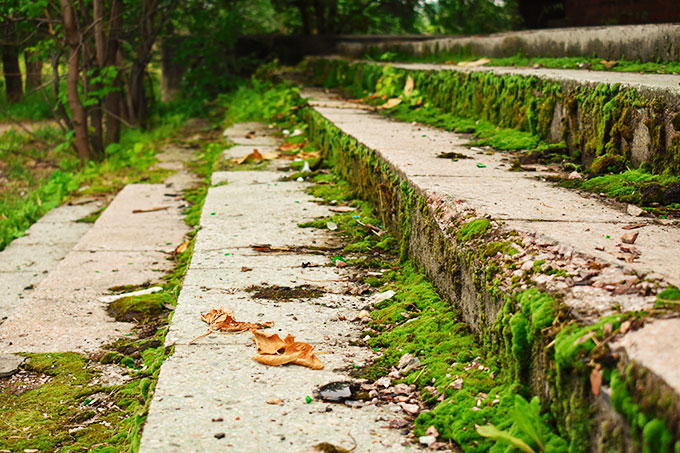
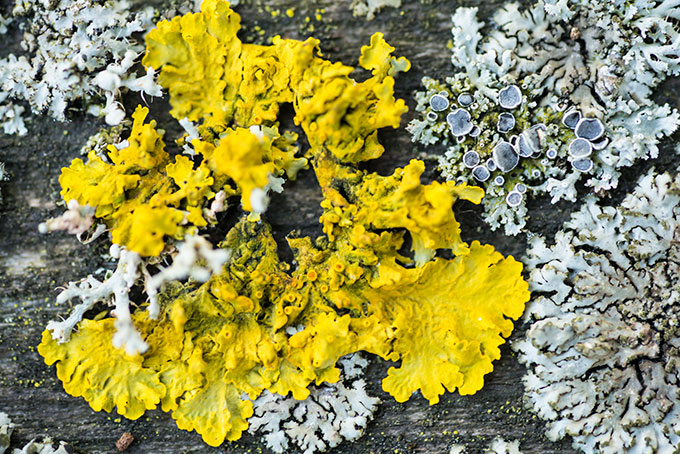
Tardigrades are found across much of Earth’s surface. Their homes include moss (above, left) and lichens (above, right) that grow on trees, rocks and buildings. Tardigrades also can be found in ponds (below, left), sometimes living among tiny plants called duckweed. These hardy creatures even thrive on the surface of glaciers (below, right), where sand or dust cause little holes to melt in the ice — making tiny tardigrade lairs.
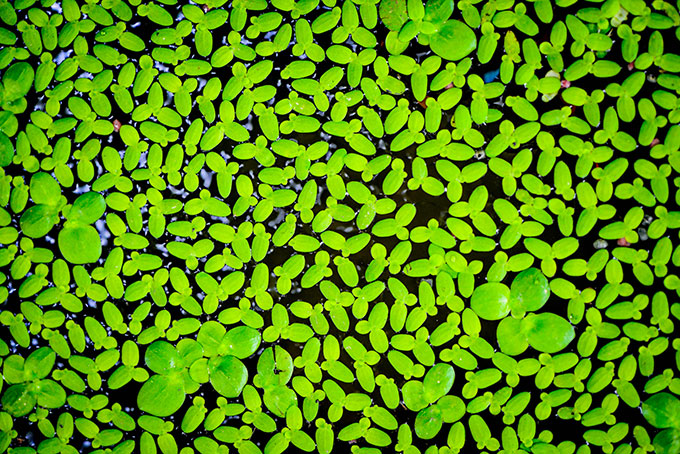
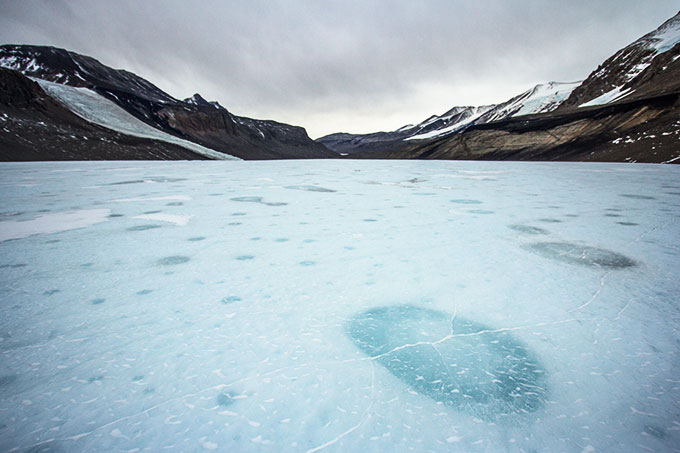
Surviving without water
Drying damages cells in several ways. As cells wrinkle and shrink like raisins, they crack open and leak. Drying also causes proteins in the cells to unfold. Proteins provide the frames that keep cells in their proper shape. They also act as tiny machines, controlling the chemical reactions that a cell uses to break down its food for energy. But like paper airplanes, proteins are delicate. Unfold them, and they’ll stop working.
By the 1990s, scientists had come to believe that drying also damages cells in one other way. As a cell dries, some molecules of water left inside it can start to break apart. H2O breaks into two parts: hydrogen (H) and hydroxl (OH). These reactive components are known as radicals. Scientists believed these chemicals might damage the cell’s most precious possession: its DNA.
DNA contains the cell’s genes — the instructions for making every one of its proteins. The delicate molecule looks like a skinny, spiraling ladder with millions of rungs. Scientists already knew that radiation damages DNA. It breaks the ladder into pieces. If tardigrades could survive DNA damage during drying, that same ability might help protect them against radiation.
In 2009, two teams of scientists finally figured this out. Lorena Rebecchi showed that when tardigrades dry out for three weeks, their DNA really does break. Rebecchi is a biologist at the University of Modena and Reggio Emilia in Italy. She found what are called single-strand breaks, where the DNA ladder has broken on one side. Rebecchi shared her team’s work in the Journal of Experimental Biology.
That same year, scientists in Germany turned up something similar. When tardigrades dried, their DNA accumulated not only single-strand breaks, but also double-strand breaks. That is, the DNA ladder broke on both sides. This caused segments to entirely come apart. These complete DNA breaks even happened when the tardigrade was kept dry for only two days. After even longer —10 months of dryness — 24 percent of the animals’ DNA had fragmented. Still, they survived. The team described these findings in Comparative Biochemistry and Physiology, Part A.
To Rebecchi, these data were important. That tardigrades can survive high doses of radiation, she says, “is a consequence of their ability to tolerate desiccation,” which means drying out.
Tardigrades are adapted to surviving DNA damage, she says, because this is what happens when they dry out. This adaptation also allows them to survive other DNA-damaging assaults. Such as high doses of radiation.
Teeny tiny cows
When discovered in 1773, tardigrades were thought to be predators — lions and tigers of the microscopic world. In fact, most species graze on single-celled algae, making them more like microscopic cows. Tardigrades look scary up close, with sharp claws (images labeled d, e and f) and a mouth (image g) you might envision on a space monster.
Repairing and protecting DNA
Rebecchi thinks tardigrades are likely very good at repairing their DNA — mending those breaks in the ladder. “At this moment we don’t have proof,” she says. At least not in tardigrades.
But scientists do have some evidence from insects called chironomids (Ky-RON-oh-midz), or lake flies. Their larvae also can survive drying out. They, too, can survive high doses of radiation. When the fly larvae first awaken after three months of being dry, 50 percent of their DNA is broken. But it only takes them three or four days to fix those breaks. A team of scientists first reported this in 2010.
DNA repair is likely just a piece of the tardigrade puzzle. The creatures also protect their DNA from breaking in the first place.
Japanese scientists discovered this in 2016. They were studying tardigrades that live in clumps of moss that grow on city streets in northern Japan. This species has a protein that is unlike those found in any other animal on Earth — except for one or two other tardigrades. The protein latches onto DNA like a shield to protect it. They called this protein “Dsup” (DEE-sup). That’s short for “damage suppressor.”
The scientists inserted this Dsup gene into human cells that were growing in a dish. Those human cells now made the Dsup protein. The researchers then hit these cells with X-rays and with a chemical called hydrogen peroxide. The radiation and the chemical should have killed the cells and broken their DNA. But those with Dsup survived just fine, recalls Kazuharu Arakawa.
A genome scientist at Keio University in Tokyo, Japan, Arakawa was one of Dsup’s discoverers. “We were not really sure if putting only one gene into the human cells would [give] them radiation tolerance,” he says. “But it did. So it was quite a surprise.” His team shared its find in Nature Communications.
These adaptations also likely explain how tardigrades can survive in space. Because radiation is plentiful there and air completely absent, living things dry out quickly. Jönsson sent some of his tardigrades into space in 2007. They orbited Earth for 10 days on the outside of an unmanned spacecraft called FOTON-M3. The tardigrades that survived this treatment had already been completely dry. Jönsson reported his team’s results in 2008, in Current Biology.
Tardigrades in space
In 2007, tardigrades were launched into space by the European Space Agency, as part of the FOTON-M3 Mission (left: the capsule containing the tardigrades and other experiments; right: the rocket that carried the capsule to space). For 10 days, the animals orbited Earth on the outside of the spacecraft, 258 to 281 kilometers (160 to 174 miles) above the planet’s surface. During this time, they were exposed to the vacuum of space and high levels of ultraviolet and cosmic radiation. The experiment was run by Ingemar Jönsson of Kristianstad University in Sweden.
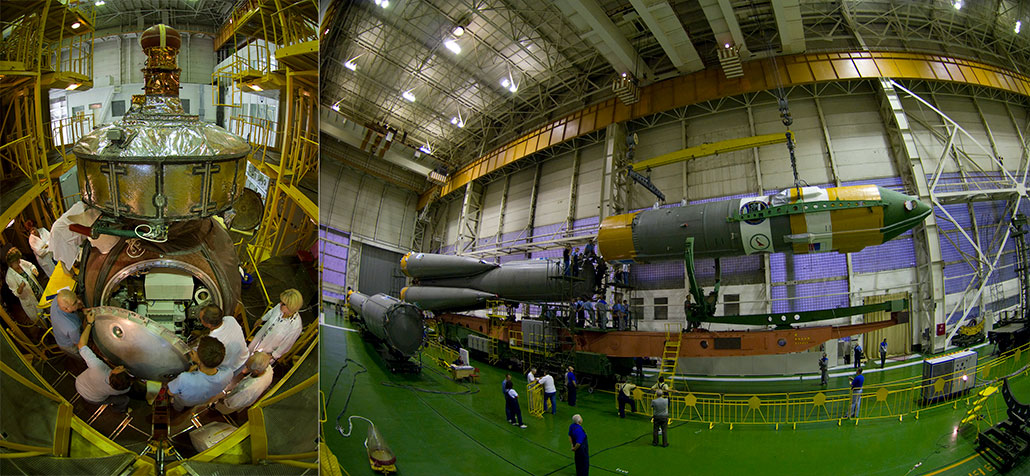
Saved by packing peanuts
Tardigrades’ tolerance for drying also may explain why they can survive freezing at very low temperatures.
As temperatures fall below freezing, water seeps out of an animal’s cells. It forms ice crystals outside of the animal’s body. As the cells lose water, their outer membranes (which are like skin) would normally wrinkle and crack open. The cell’s delicate proteins would also unfold, like ruined paper airplanes. This is a large part of why freezing kills most living things.
But tardigrades can survive having their cells shrivel up like raisins. And in 2012, scientists in Japan discovered a major clue to why.
They analyzed thousands of proteins that tardigrades produce as they start to dry out. The animals produced five proteins in huge amounts. And these look unlike any other known protein, says Arakawa. He was part of the team to discover these novel proteins.
They were far floppier and more flexible than most proteins. They resembled tangled yarn more than a precisely folded paper airplane. But as a tardigrade lost water, these proteins did something amazing. Each one suddenly took the shape of a long, skinny rod. The results were published in PLOS One.
Water normally keeps a cell’s membranes and proteins in their proper shape. The liquid inside a cell physically supports these structures. In most organisms, losing that water causes membranes to bend and break; this causes proteins to unfold. But in tardigrades, when the water disappears these rod-shaped proteins seem to take over that critical support job.
That’s what Arakawa and other scientists suspected. And last year they turned up strong evidence this is true.
Two teams of scientists inserted genes to make these proteins — called CAHS proteins — into bacterial and human cells. (Both teams were based in Japan. Arakawa was on one of the teams.) As the proteins became crowded in the cells, they clumped together to form long, crisscrossing fibers. Like spider webs, these structures reached from one side of a cell to the other. One team published its results in the November 4, 2021 Scientific Reports. The other posted its findings at bioRxiv.org. (Research findings shared on this website have not yet been vetted, or peer-reviewed, by other scientists.)
It was almost like the cells were stuffing themselves with Styrofoam packing peanuts in order to protect their delicate parts. And in tardigrades, this filler disappears when it’s no longer needed. As water comes back into the cells, the fibers fall apart. The returning water once again embraces and supports the cell’s structures.

Earth is a tough place to live
Figuring out how tardigrades endure extremes could help other species survive in harsh environments. Like us. In fact, it could help humans explore the hostile environment of outer space.
A big challenge of long-term space travel is how to grow food. Space is full of radiation. On Earth, people, plants and animals are protected by our planet’s magnetic field. But inside a space ship, the levels of radiation would be far higher than on Earth. During long voyages, this radiation could interfere with the growth of food crops, such as potatoes or spinach. Engineering plants to make tardigrade proteins, though, might give them a protective edge.
On September 21, 2020, scientists reported that they had inserted the gene for the tardigrades’ Dsup protein into tobacco plants. Tobacco is often used as a model for other crops, such as those eaten as food. When the plants were exposed to DNA-damaging chemicals, they grew more quickly than plants without Dsup. And when exposed to X-rays or ultraviolet radiation, they showed less DNA damage. The researchers shared their findings in Molecular Biotechnology.
In October 2021, another team reported that tardigrade CAHS proteins can protect human cells from DNA-damaging chemicals. That suggests these proteins could also be inserted into food plants — or even into insects or fish that are grown as food. These results were posted at bioRxiv.org.
No one knows whether these technologies will work in space. But tardigrades have already taught us something important about our own world: Earth may seem like a nice place to live. But all around us are little pockets of nastiness that we humans overlook. This is even true in places that seem ordinary and pleasant — like the olive trees of Peillon, or a mossy stream that dries out in the summer. From the tardigrade’s point of view, Earth is a surprisingly tough place to live.
